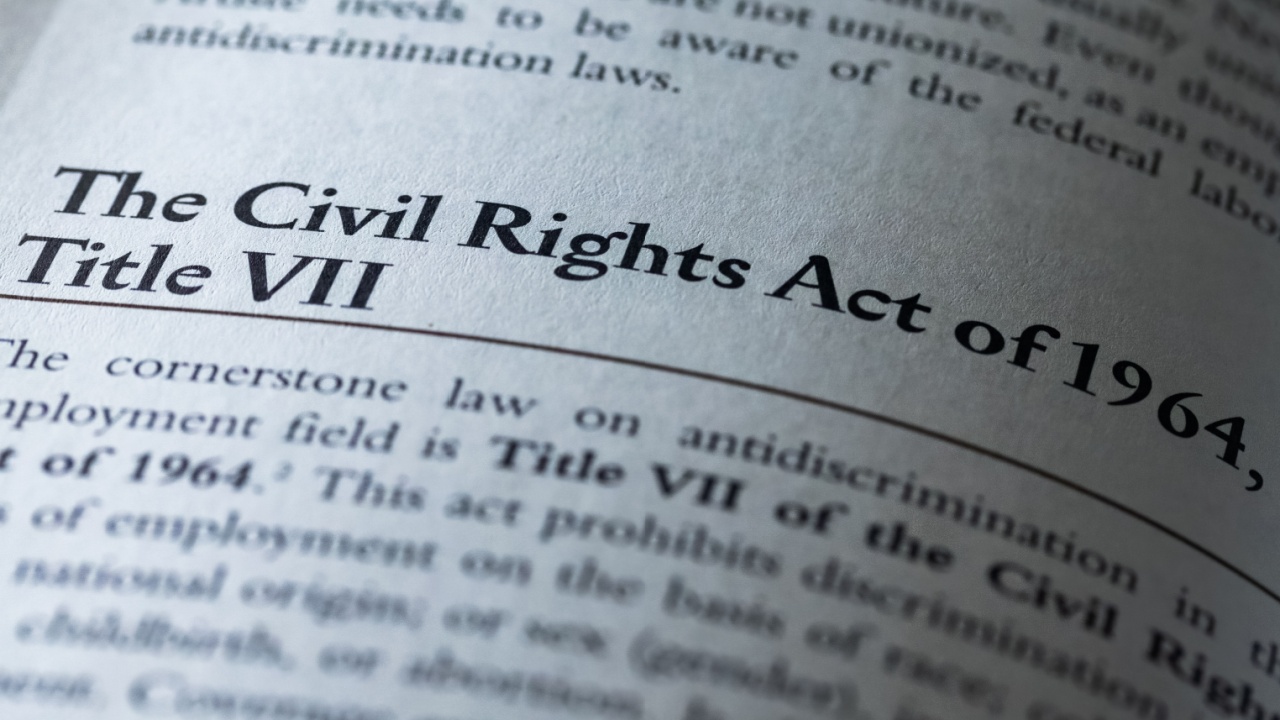It’s Bigger Than Chevron: The Civil Rights Regime

Editor's Note
Editor’s Note: For forty years, U.S. courts have deferred to unelected bureaucrats for the interpretation of ambiguous statutes. The principle of “Chevron deference” is the legal basis of the administrative state, the extra-constitutional rule by experts that provides the legal framework and the workaday operations of the group quota regime.
Jesse Merriam, an expert in legal theory and constitutional law, sees Chevron and the administrative state it empowered as just one of many planks upholding the new regime. While the end of Chevron is a welcome development, Merriam argues that real reform will require far more substantial challenges to the regime’s operating morality — not least by limiting the powers of the federal courts themselves. This is the fifth installment in a series on Loper Bright and its consequences. Read the rest of the series as it becomes available here.
For three years in a row, the Supreme Court has concluded its term by striking powerful blows against central features of the governing regime.
First came Dobbs v. Jackson Women’s Health Organization (2022), which overruled Roe v. Wade (1973), thereby returning the abortion controversy to the political process. Then came Students for Fair Admissions v. President and Fellows of Harvard College (2023), which, in invalidating Harvard’s and UNC’s affirmative programs, drew similar public and private affirmative action programs into question. And just last month, the Court concluded its term with Loper Bright Enterprises v. Raimondo (2024), which overruled Chevron U.S.A., Inc. v. Natural Resources Defense Council, Inc. (1984), the most important case empowering administrative agencies to make policy decisions independent of the legislative power bestowed on Congress by the Constitution.
On the surface, these three cases have little do with one another, in that they deal with vastly different subjects and the decisions are the products of very different types of activist movements. But the Dobbs, Harvard, and Loper decisions share an important theme: they all represent major challenges to critical features of the civil rights regime.
A defining feature of the civil rights regime is its moral system, which holds discrimination to be our ultimate constitutional evil and diversity to be our ultimate constitutional good. Abortion, affirmative action, and administrative policy have played critical roles in this system.
Consider how abortion policy follows from the civil rights regime’s demonization of discrimination. If discrimination is our greatest constitutional evil, it follows that abortion should be constitutionally protected. Because pregnancy applies only to women, to deny a woman the right to obtain an abortion is to deny her the sexual and reproductive agency of a man. In this paradigm, abortion restrictions are discriminatory, in violation of the civil rights order.
By contrast, affirmative action must be permitted under this system, because even though affirmative action is a blatant form of discrimination, racial preferences are necessary to achieve diversity, the greatest good under the civil rights morality. That is why, under the civil rights regime, affirmative action has always been the exception to the various bans on public and private forms of racial discrimination.
The administrative state has been a critical institutional feature of the expansive civil rights regime because administrative agencies can act with greater speed and less accountability than other governmental bodies. This is why so many civil rights initiatives have been implemented through these agencies.
Even though the Dobbs, Harvard, and Loper decisions represent significant blows to critical features of the civil rights regime, these decisions will do little to challenge the regime as a whole. That would require much more. As a start, taking on the regime would require challenging the moral axes undergirding the system. Challenging the civil rights regime would also require taking on the most important civil rights institution: the federal judiciary. Indeed, the federal courts, led by the Supreme Court, have created and sustained the civil rights regime by expanding congressional power over intra-state, inter-personal affairs under Article I and by interpreting the due process and equal protection clauses of the Fourteenth Amendment to create an ever-expanding list of individual liberty and social equality rights.
It is hard to imagine the Supreme Court taking on these challenges, given that this would mean limiting the Court’s own power. So while there is much to celebrate with the Dobbs, Harvard, and Loper decisions, conservatives should view them all with caution: They are but the first steps in taking down the civil rights regime. Let us hope the Court has the determination and wisdom to take the next ones.